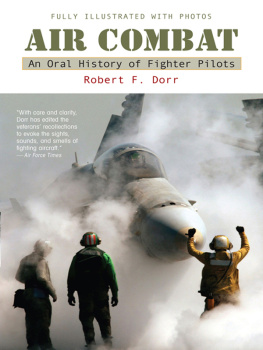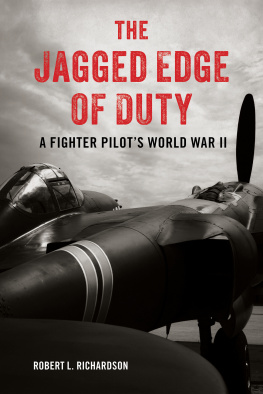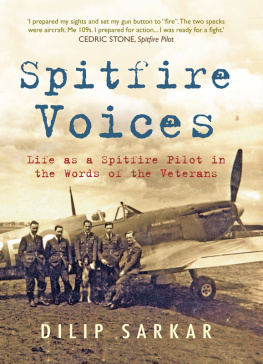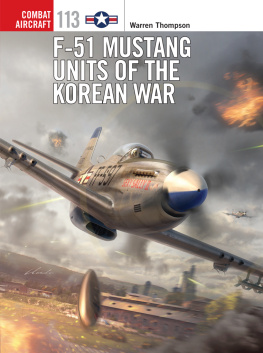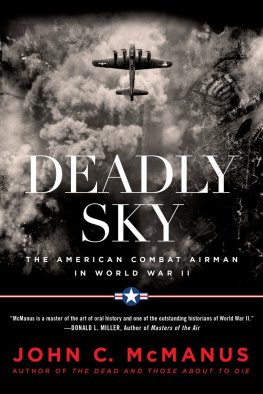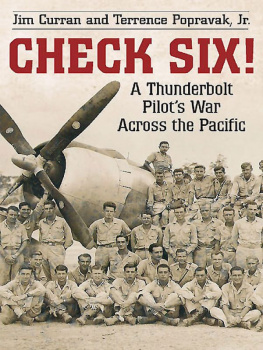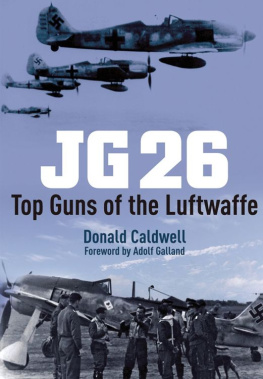The Fight in the Clouds

The Extraordinary Combat
Experience of P-51 Mustang Pilots
During World War II
James P. Busha

Contents
Foreword
Maj. Gen. Donald J. Strait, USAF (Ret.)
T he presentation of hair-raising accounts of P-51 Mustang combat stories found in Jim Bushas The Fight in the Clouds not only covers operational missions flown by Allied fighter pilots in all theaters of World War II, but it also gives the reader a true taste of what it was like to be in combat at the controls of the legendary P-51 fighter plane. From tight-turning Lufbery circles with a determined Luftwaffe pilot on your tail, to long-range bomber escorts over enemy territory and endless wide open oceans, to hard-hitting dogfights and treetop combat, The Fight in the Clouds will give the reader an authentic glimpse into history, and into what it took to fly and fight as a fighter pilot at the controls of the various P-51 Mustangs in combat.
From the early days of the Allison-powered P-51A Mustang and A-36 Apache dive bomber, the Mustang held the line for the Allies until more advanced models entered service. When bomber crew loss was at an all time high and morale at an all time low, prayers were answered when the P-51B, with its Rolls-Royce Merlin engine, entered the war and effectively helped turn the tide, quickly establishing air superiority. With the introduction of the P-51D and its signature teardrop canopy, the ultimate fighter was born.
What makes this book even more enjoyable is the fact that these tales of day-to-day aerial combat are written in an as told to fashion, as Jim Busha has captured firsthand accounts through detailed interviews with the men who flew and fought with the Mustang in World War II. I am honored to have this unique opportunity to write the foreword for The Fight in the Clouds, especially since I became quite familiar and rather fond of the P-51 Mustang during my combat tours while assigned to the Eighth Air Force during World War II.
When I graduated from pilot training in January 1943, I was assigned to Westover Field in Massachusetts, where I was to be checked out in the P-47 Thunderbolt. After completing the transition training program in March, I was assigned to the 361st Fighter Squadron of the 356th Fighter Group, where I obtained advanced fighter training prior to deployment to the Eighth Air Force in England. Our group arrived in Liverpool in early September 1943, and was eventually located at Martlesham Heath RAF station for combat operations.
By August 1944, I had completed eighty-seven combat missions and notched three victories while flying the P-47. But by the fall of 1944, as the Allied air forces advanced farther and farther into Germany, it became necessary for our group to convert to the P-51 Mustang. We soon found out that the Mustang had long legs when we increased our fuel capacity with external drop tanks. We could not only stay with the bombers all the way in, but after escorting them out of harms way, we could drop down to the deck and look for targets of opportunity. But by far the Mustangs greatest attribute was its superior dogfighting abilities over the Axis aircraft. There was nothing else that could compare to the Mustang. In my mind, the P-51 Mustang was the ultimate fighter of World War II.
Ever since earning my wings, I had dreamed of becoming an ace (a military pilot credited with shooting down five or more enemy aircraft). My dream finally came true while flying the P-51 Mustang on a B-17 escort mission to Berlin in early December 1944. As the bombers turned west after dropping their bombs, my squadron observed forty-plus Fw 190s approaching from the southeast. I initiated an attack on one and observed strikes in the cockpit area. The Fw 190 did a snap roll and went straight down, out of control. Pulling away from that engagement, I bounced another 190 in a turn, firing at thirty degrees deflection using the K-14 gyroscopic gun sight from four hundred yards away. I observed hits in the cockpit and fuselage as the 190 did a violent snap roll before diving sharply. The pilot bailed out before his aircraft crashed. Those two kills gave me a total of six, which more than qualified me for ace status. Before the war ended, I more than doubled my score and became the leading ace of the 365th Fighter Group with 13 victories. I flew more than thirty-five combat missions in the Mustang.
But as you will see in this book, I was not alone. I am honored and humbled to be associated with fellow Mustang aces such as George Preddy, Don Blakeslee, Bud Anderson, Bob Goebel, and countless others who proved that the P-51 Mustang was a fighter that had no equal and that in the hands of a skilled pilot it was a force to be reckoned with. It not only had excellent firepower, with the later models carrying six .50-caliber machine guns, but it was the only fighter with sufficient long-range capabilities to take the fight to the enemy. With the introduction of the P-51, Allied bomber casualty rates were reduced by 75 percent when being escorted by the Mustang.
Although World War II is now a distant memory for most of us, the mere mention of the P-51, along with the sights and sounds of a restored example, stirs up vivid details that until now were seldom shared with the general public. Climb aboard with me as you take a historic journey back in time while at the controls of the P-51 Mustang. I hope you agree with me that The Fight in the Clouds is next best thing to actually being there.
Telling Stories
Lee Lauderback
S tories are treasures that have had significant impact on human history. Without stories, history is lost. Stories involve real people, their exploits, their failures, and their accomplishments. Storytelling has existed since primitive man. Paintings on the walls of caves that date back thirty-five thousand years tell of life-changing events that were shared with others.
In September 1940, the first P-51 took to the skies, and a storybook of epic proportions followed. But now, nearly seventy-five years later, the chapter on these courageous men who flew this magnificent fighter in combat is rapidly closing.
I have been privileged to fly the P-51 Mustang almost every day for the past twenty-five years, but the real blessing has been to share the Mustang once again with some of the warriors who flew the aircraft for real, and listen to their stories.
Men such as Irving Reedy, whose last combat mission was in March 1944, a fateful day when he was shot down by enemy ground fire and became a prisoner of war. Nearly fifty-six years later, we flew the Mustang together one last time. It was a special flight, but even more special was to listen to his stories of flying the P-51 in combat. The facts had little if any emotion, while his stories make his history very real.
Or the legendary Robin Olds, the Break glass in case of war leader who flew the P-51 in combat and quickly became an ace. I had the privilege to requalify Robin almost twenty years ago in Scat VII, a TF-51 Mustang. We had an awesome time, but even more special was the chance to hear some of his stories of flying the Mustang; to hear how he precisely maneuvered his nimble Mustang to defeat enemy aircraft; to hear how the Mustang always brought him back from combat; to hear how Scat became the name on all his combat aircraft.
Or the very best stick and rudder man ever to fly, R. A. Bob Hoover, the pilots pilot. Over the years Ive had the privilege to fly with Bob many times, and each was an adventure. However, the real treasure was an exclusive invite to drink gin and vodka while listening to Bob and Tex Hill tell stories on each other. If Id only had a recorder!


